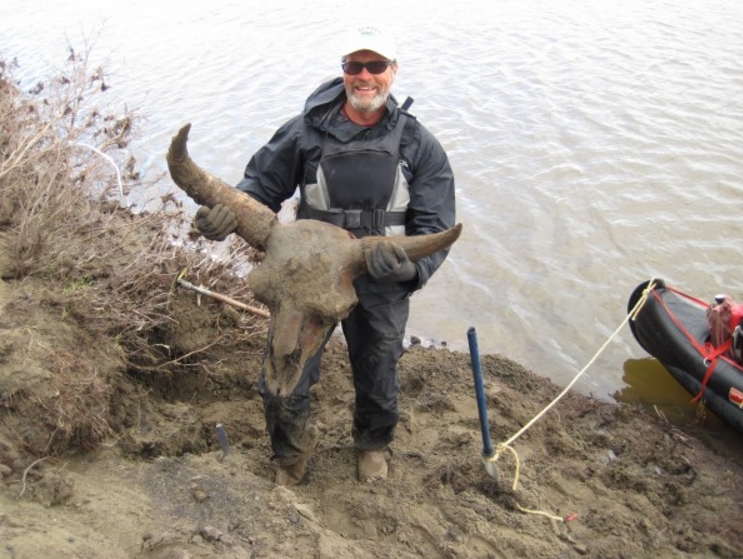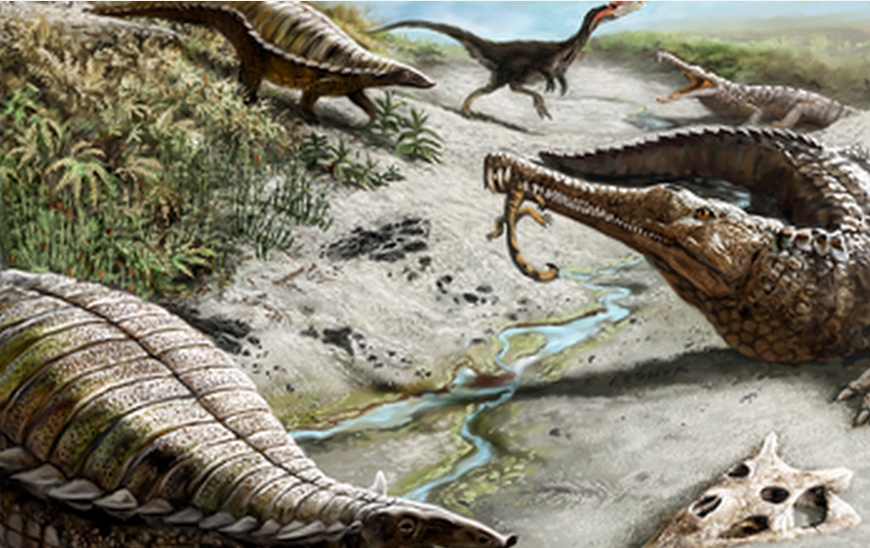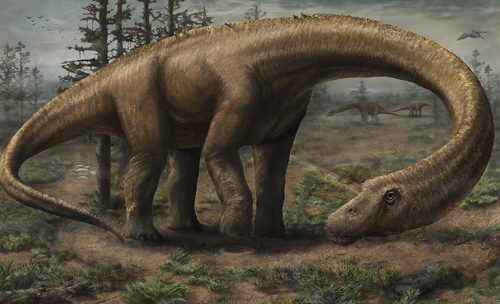The journal Nature has published a study analysing the lines of arrested growth (LAG) in the bones of around a hundred ruminants, representative of the specific and ecological diversity of that group of mammals.
The results show that the presence of these lines is not an indicator of an ectothermic physiology (does not generate internal heat), as had previously been thought, since all warm-blooded mammals have them. The study therefore dismantles the key argument of the hypothesis that dinosaurs could have been cold-blooded reptiles. The work was carried out by researchers from the Institut Català de Paleontologia Miquel Crusafont (ICP), in collaboration with a researcher from the Norwegian Polar Institute.
LAGs are seen in bone sections as dark rings, similar to those seen in tree trunks. The rings are formed, both in the studied mammals and in trees, during the unfavourable seasons (winter or dry season) when the growth of the organism is arrested as a result of a lack of resources. The presence of LAGs in bones was, until now, considered to be the clearest indicator of ectothermy since the seasonal arrest of growth was related to the animal’s inability to maintain a more or less constant body temperature (endothermy) during the season of scarce resources.
As the ICREA researcher and ICP palaeontologist Meike Köhler explains: The study we have carried out is very powerful, both in terms of the amount of material and the diversity of species with which we worked, but we did not design it to find a response to the thermophysiology of dinosaurs. We sought to better understand the physiology of extant mammals and how the environment affects them – how their growth changes as a result of external temperatures, rain and the availability of food and water”.
Understanding this was the first step to establishing discussions in paleontological research about the physiology of animals that lived several million years ago.
But the researchers realised that what they observed in the bones of different ruminants refutes the main argument for an ectothermic physiology in dinosaurs. Many hypotheses set out from the premise that large mammals – endothermic par excellence – do not have LAGs in their hard tissues since they do not need to arrest their growth responding to external temperature conditions. In fact, since LAGs have been observed in almost all species of dinosaur, many scientists considered that they were cold-blooded reptiles.
|
|
The article published today in Nature offers the first systematic study, based on an extensive sample of mammals representative of a large variety of ecosystems, which shows that LAGs do not indicate an ectothermic physiology but give us information about how the physiology (metabolism) of an animal changes according to seasonal endocrinal changes, both in cold- and warm-blooded animals. These changes represent a common heritage in all vertebrates and are a kind of internal clock that regulates the animals’ needs according to the seasonal availability of resources. Despite the fact that these physiological changes have a strong genetic component, they are also functional and their intensity depends on the ecological conditions in which the animals live. The main ecological factors are more rain and limited supply of food and water, rather than external temperature. This discovery opens up a major line of research into the conservation of biodiversity on our planet today.
Researcher Meike Köhler says:
It may seem surprising that until now there has not been a similar systematic study to prove or disprove whether it is only ectotherms that leave these marks in their bones during growth. In fact, there are so many things we do not know that science does not always advance in a linear way. The ideas somehow had long been wandering among the scientific community, but the work we have published organizes them and bases them on data.
In fact, some previous studies had already questioned this hypothesis and among the international scientific community there has been increasing consensus about the idea that LAGs were not necessarily indicators of ectothermy. Similarly, examples of mammals that seemed to have LAGs in their bones had emerged. This study conclusively closes the debate.
The ICP researchers Xavier Jordana, lecturer of postgraduate studies at the Universitat Autònoma de Barcelona and Nekane Marín, PhD student at the same university, have also participated in this study.
SOME ELEMENTS IN MORE DETAIL
Discussion of the physiology of dinosaurs
The idea that dinosaurs may have been warm-blooded reptiles is not a new one. In fact for more than 40 years it has been the subject of discussion among researchers. On the one hand, the fact that they achieved sizes of dozens of metres and enormous weights in such a short time led scientists to think of an endothermic physiology, since such huge growth is only known among animals with high metabolisms. Endothermic animals, which are able to generate internal heat, can grow continuously and maintain a highly active metabolism from birth up to maturity.
|
|
Until a few years ago, however, the existence of clearly marked LAGs in the bones of vertebrates has been thought of as an indicator of ectothermic physiology or cold bloodedness. It was thought that the growth lines appeared periodically coinciding with the cold season when the animals’ metabolism slowed down and growth was basically arrested.
This study shows that ruminants, which are large mammals with species capable of living in hot and cold ecosystems as well as humid and dry environments, also have LAGs whether they are living at the North Pole or in the tropics. It has therefore been demonstrated that the only indicator of the fact that dinosaurs could have been ectotherms, does not denote their thermophysiology.
This study confirms that the evolutionary adaptations that enabled the change from an ectothermic to an endothermic physiology would have occurred twice: in mammals and, among reptiles in dinosaurs.
On the conservation of extant species
Another very interesting aspect of this work is its application to studies for the conservation of the biodiversity of the planet.
Köhler and her colleagues have included in their study more than a hundred ruminants, representing almost all the existing tribes. In all, they analysed up to 115 right femurs from species in 36 different localities in Africa and Europe, which cover almost all the different climatic regimes that exist today.
In all cases, whether in hot or cold latitudes, tropical forests or deserts, the mammals showed LAGs in their bones. Weight was not a discriminating factor either, since among the species studied some adults weighed 3-4 kg while others reached weights of 900 kg.
On the other hand, it was observed that the LAGs are normally formed during the dry season, which at high altitudes coincides with the cold season. This fact confirms the hypothesis that the availability of resources, which are largely dependent on the precipitation in an area, influences the growth and physiology of species.
Large mammals, like all organisms that are exposed to seasonal changes, have developed physiological adaptations that enable them to survive the unfavourable seasons while taking maximum benefit from the favourable season. These metabolic changes are highly visible in the endocrine systems of extant species. Thanks to the research led by Meike Köhler it has been possible to demonstrate a direct correlation between the highest growth rates and the highest levels of metabolism at times with availability of food resources.
|
|
The study of LAGs is, in fact, a tool for demographic research, for analysing the health of a population. This tool is known as skeletochronology. Since LAGs are annual, for several decades they have been used in the conservation of amphibians and reptiles, since they enable to calculate the age at death of individuals in a population based on the number of lines. They also enable to calculate the age of sexual maturity for both males and females. Given the above, the entire profile of a population may be analysed including its capacity for juvenile recruitment and its capacity to respond to unfavourable conditions, such as the destruction of the ecosystems by humans or changes related to climate. Now that we know that LAGs are also present in ruminants, these studies will enable improved conservation of mammals and better knowledge of how human activity and climatic change can endanger the biodiversity of the planet.






